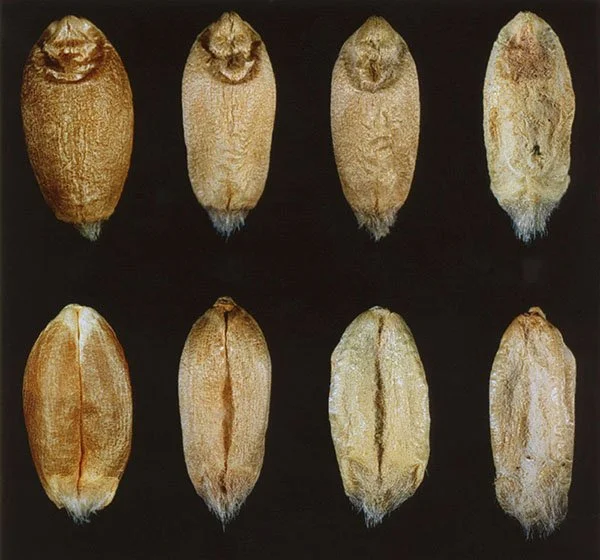Meet the Factor: Fusarium
Image Source: Canadian Grain Commission
Fusarium is one of the most concerning grading factors in cereal crops like Canadian Western Red Spring (CWRS) wheat, oats, and barley. It doesn’t just impact grade, it has direct implications for food and feed safety, making it one of the most closely monitored issues in grain quality.
What is Fusarium?
Fusarium is a fungal disease that infects kernels, causing visible damage and sometimes producing mycotoxins such as deoxynivalenol (DON, also known as vomitoxin). In grading, the most common indicator is Fusarium-damaged kernels (FUS), which often appear shrivelled, chalky, or bleached compared to healthy kernels.
Why Does Fusarium Matter?
Fusarium impacts grain in two important ways:
Grading and Marketability: Visible FUS can lower grain grades, reducing the value farmers receive at delivery.
Food and Feed Safety: Even at low levels, DON can trigger contract rejections or export restrictions, limiting market options for buyers and processors.
How Does Fusarium Develop?
The fungus thrives in moist, humid conditions during flowering and grain fill. Common factors include:
Weather: Frequent rain or high humidity at flowering increases infection risk.
Residue: Crop residues left on the field can host spores, raising inoculum levels.
Variety and Rotation: Susceptible varieties or short crop rotations with cereals elevate the chance of outbreaks.
What Can Farmers Do?
Farmers can’t always prevent Fusarium, but they can take steps to reduce its impact:
Choose resistant or moderately resistant varieties when available.
Use crop rotation to lower inoculum pressure.
Apply fungicides at early flowering to reduce infection risk.
Test grain for DON levels before delivery to avoid surprises.
Use automated grading tools on-farm to monitor FUS levels and plan.
What Can Graders Do?
FDK is a subjective factor, and small differences in interpretation can lead to disputes. Automated grain grading reduces this risk by:
Applying grading standards consistently, with no bias or fatigue.
Handling high volumes of samples quickly during intake.
Delivering repeatable, objective results that improve trust between buyers and sellers.
What Can Processors Do?
Processors need confidence in the quality and safety of incoming grain. Automated grading helps them:
Segregate Fusarium-affected lots to protect shipments and processing efficiency.
Monitor DON risks more closely by combining grading data with lab results.
Collaborate with buyers and farmers using clear, transparent quality feedback.
How Ground Truth Ag Can Help
Our automated grading technology delivers fast, consistent results on Fusarium-damaged kernels, helping farmers, buyers, and processors respond with confidence. By knowing Fusarium levels early, everyone in the value chain can make better decisions that reduce risk and protect value.
Contact us today to book a demo.

